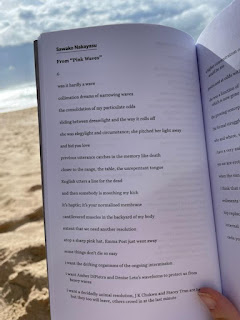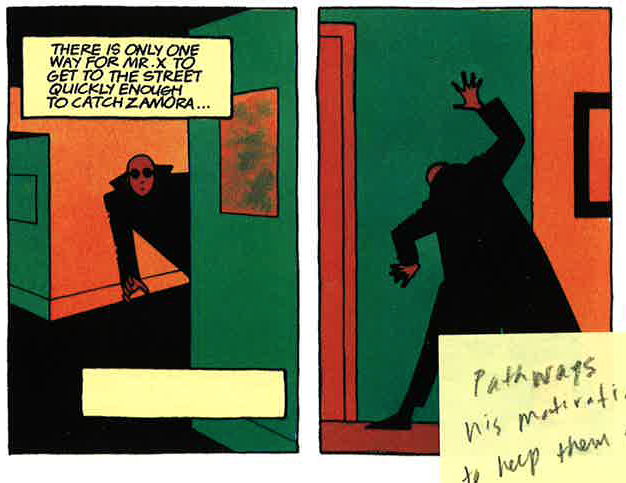Wednesday, December 14, 2022
240. Losing Music } & Swordfishtrombones.
Monday, October 3, 2022
239. Clovis takes a relic & } in no time loses his mind.
What would your feelings be, seriously, if your cat or your dog began to talk to you, and to dispute you in human accents? You would be overwhelmed with horror. I am sure of it. And if the roses in your garden sang a weird song, and you would go mad. And suppose the stones in the road began to swell and grown before your eyes, and if the pebble that you noticed at night had shot out stony blossoms in the morning?
No, I don’t think [facts] have any limits, I mean that’s, I mean that’s my one rule of writing an essay is that all the information in independently verifiable. So, it’s not that it’s necessarily true or not true but somebody believed it not me and I don’t invent anything.
So this book [Angels & Saints], like all things, started with Donald Trump, really. As you mentioned I write about politics for periodicals abroad and about American politics and because of that I have to follow the minutia of the news which you know kind of drives one crazy so I like to have a project that’s kind of timeless and that’s news that stays news.
Thursday, August 4, 2022
238. David Cronenberg’s } funny cars.
Watch Crash (1996). Then watch Fast Company (1979).
Sunday, July 24, 2022
237. & } ampersand.
Thursday, July 21, 2022
236. Revisit Lucy Ives’ } The Hermit.
“…studies of description” are? (35.)
“I can’t describe myself as a poet. I’m the author of some kind of thinking about writing.” The Hermit is not poetry. Ives claims she’s a novelist. (36.)
Among several texts Ives wants to read is Susan Howe’s “Statement for the New Poetics Colloquium, Vancouver. 1985.” An essay-poem. Howe writes, “I wish I could tenderly lift from the dark side of history, voices that are anonymous, slighted—inarticulate.” Maybe a poetic, certainly a goal. A (mostly) impossible goal. An inarticulate voice is a voice kept hidden in the mind. There’s no way Howe can pull that out of the past. Ives is interested in thoughts she has but can’t quite articulate. Not quite the same goal as Howe’s; Howe wants to “lift” other voices, Ives wants to lift her own voice. (37.)
Can an artwork, made to articulate an idea (a vision), be used to understand an unrelated experience? Ives asks, “Could we use art to interpret daily life?” What distinction does Ives make when she writes “daily life”—as opposed to what other kind of life? Is “daily life” a euphemism for normal? (38.)
“I perhaps don’t read or write enough and yet always feel like I am reading, like I am writing.” Ives doubts this statement—thus, “perhaps.” Does Ives feel she doesn’t read enough useful writing? Writing that challenges &/or inspires? What is she reading instead of Susan Howe’s (short) essay? (42.)
“…(some kind of essay on collage). Attempting to ‘see’ the way in which the eye cuts out.” The eye pre-cuts what is cut by scissors / blade. Un Chien Andalou. (47.)
“Christine on literary realism: This is when coincidence and personal connections (interrelatedness) drive a story….” Christine, the titular evil car from Stephen King’s novel. Christine drives a story. (50.)
“When I was 13 I swore to myself that I would become a novelist.” Ives is a novelist. I have not read her first novel, nor have I read her third novel Life Is Everywhere (daily life?). From the publisher’s description, Life Is Everywhere is about a writer in a graduate writing program & about unpublished manuscripts. Loudermilk, Ives’ second novel, is also about writers in a graduate writing program (& the non-writer who fools everyone). Does Ives’ vow, made at age 13, interfere with her writing now? (53.)
“A dream: A night goes on for years. One must make use of public transportation in order to cross it.” To cross the night? Read E. M. Forster’s “The Celestial Omnibus.” (58.)
Dreams acted upon when awake. (68.)
“I spent many years with a strong, almost violent feeling that there was much to live for, although I may have been inactive for much of this time.” A lust for life, but a life of fantasy & idea made actual on the page. (69.)
“Is there that which can only be seen in a glance?” See Ives’ collage essay idea. Ghosts. (70.)
In death, we are sent to the place where our belongings are & while our belongings remain we are never able to leave that place. Ghosts linger by their stuff. If, retroactively, we declare that property belongs to people long dead, we exile them to that spot. (73.)
Ideas decay as dream do. (77.)
[All quotes, unless otherwise attributed, are from Lucy Ives’ The Hermit, The Song Cave, 2016. The parenthetical numbers correspond to the numbered sections in The Hermit—there are no page numbers. I wrote about The Hermit before; that essay appears in 3AM Magazine. Ives read my essay & kindly responded, “Thank you, Adam! This is fascinating. I appreciate your sleuthing, re: the meanings of the text.”]
Tuesday, June 7, 2022
235. Nancy Wheeler wears } an Emerson T.
Saturday, June 4, 2022
234. Clint Smith } loiters low.
I’ve read “Lovenest,” Clint Smith’s contribution to Looming Low II (from Dim Shores, due this fall). I won’t spoil it other than to say it’s fun &…
the narrator & his ex-wife talk in a dark parking lot next to a partially-demolished hotel. This setting is commonplace & bleak. Cooking oil, asphalt, dumpster, exhaust. Chain-link fence, young maple, bramble. A paper receipt, ground into the dirt. Mundane & awful. Especially American?
In my introduction to Clint’s Skeleton Melodies, I characterized his fiction as “realism horror.” An awkward phrase, for sure—but apt enough (he adopted the phrase as his blog’s sub-head, so surely he finds it apt). For all the fantasy in “Lovenest,” the parking lot setting grounds the story here. It’s also where the most ominous scene in the story take place: the moment before the charnel house door is slammed shut (so to speak).
I don’t know that Looming Low II will be worth your hard-earned & diminished dollar, but you’ll want to read Clint’s story for sure. (Mind, I have no reason to believe Looming Low II won’t be good! But we haven’t read the other stories yet, have we?)
In the meantime, there’s Ghouljaw & Skeleton Melodies. Get thyself to a library, nun!
Saturday, May 21, 2022
233. Sawako Nakayasu } leaves.
Kate K. texted the following three photos:
Wednesday, May 4, 2022
232. Mister X proposal for } Critical Cartoons.
Throughout 2015 & 2016, Tom K. (editor at Uncivilized Books) & I corresponded about Critical Cartoons; in May of 2016, I queried about writing a volume,
I keep toying with the possibility of proposing a book for your series... but I imagine you're well set for the future. I'd do Mr. X (Vortex) or The One (epic) or (heaven forbid!) Gore/Shriek (FantaCo). So much to think about.
Please propose a book! I’d LOVE a book about Mr. X (architecture & comics is one of my pet topics!) or The One!!! I haven’t thought about Gore/Shriek in ages, I’ll have to dig them out of my long boxes! There a lot of proposals I’m juggling, but a [sic] many of them are not very solid yet. There’s a lot of room to maneuver if you’re serious.
Apologies for the big delay! We were pretty swamped with pre-sales for the Spring ’17 season. I’m planning on taking a look & giving you some feedback this week. I really appreciate this!
Saturday, April 30, 2022
231. Conversation w/ } Spider & the Undiscovered Bug.
Monday, April 25, 2022
230. Marie de France & } Tales from the Darkside.
The story was adapted in 1985 for an episode of Tales from the Darkside, starring John Heard and Penelope Ann Miller. By all accounts, it was forgettable and did not justice to MacDonald’s writing.
Friday, April 22, 2022
229. Abbey Road sketches } (home demo).
A student wrote “zone-off” instead of “zone-out.” She zoned-off. I dig it. Like, to get-off. Zoned-off to “I Want You (She’s So Heavy)”—but, as often, study / attend to it.
Friday, April 15, 2022
228. Cricket for } Mira Calix.



.jpeg)








